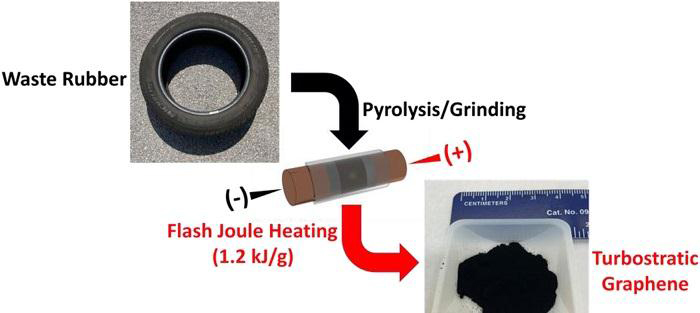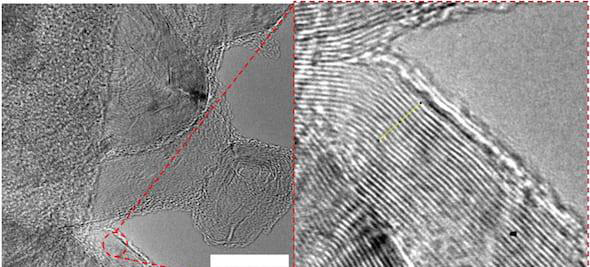Graphene made from rubber waste helps to enhance the performance of concrete
A research team at Rice University has developed a new method that can convert waste tires into graphene, which can then be used in the manufacture of concrete. On the basis of practicing environmental protection, this scheme can also significantly improve the firmness of concrete. Specifically, through the so-called "rapid Joule heating" scheme, the researchers use electric shocks to quickly heat almost all carbon sources to approximately 2725 ℃ (4940 ℉), thereby converting them into graphene flakes.
(来自:Rice University)
This is a form of material called "Turbostratic Graphene". Because the sheets are not completely aligned, the material is more soluble and can be easily integrated into composite materials.
As early as last year, the research team has made a technical demonstration on food and plastic waste. Now, they have turned their attention to discarded tires.
Previous efforts to directly convert tires into graphene have not achieved the best results. But in the new study, they turned to materials left over after a general recycling process.
The so-called pyrolysis involves burning tires in a low-oxygen environment. The products are a kind of oil that is very practical for a series of industrial processes and solid carbon residues that are difficult to find new application scenarios.
The good news is that the Rice University research team found that this carbon black derivative is an ideal choice for the production of flash graphene.
During the rapid Joule heating process, about 70% of the material is converted to graphene, and the yield of the mixture of crushed tire rubber and commercial carbon black is about 47%.
Flash evaporation process can be used for graphene preparation based on rubber waste
Next, the research team demonstrated a special use case of graphene materials. After adding graphene/carbon black + crushed rubber mixture to the cement in the proportions of 0.1 wt% and 0.05 wt%, the compressive strength of the concrete cylinder made was increased by about 30%.
“This increase in strength is in part due to a seeding effect of 2D graphene for better growth of cement hydrate products, and in part due to a reinforcing effect at later stages,” Rouzbeh Shahsavari who co-led the study, said.
In summary, this technology can not only significantly enhance the performance of concrete, but also has considerable environmental benefits-in addition to reducing waste tires that are landfilled in garbage dumps, the additional material strength can also reduce the required concrete amount in the building structure.
James Tour, another major co-author of the study, pointed out that concrete is the world's most productive material, and its carbon dioxide emissions alone account for 90% of that of the world.
If we can use less concrete in roads, buildings and bridges, we can achieve significant emission reduction goals from the root.


